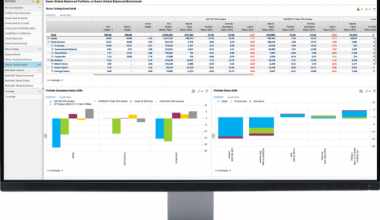Every trip starts with the first step. And every sales journey today begins with a single click. As sales reps move their leads through the sales pipeline, they are likely to be thinking about numbers like talk time, conversion rates, and quote-to-close ratios, which all relate to the sales revenue of the company. But what exactly is sales revenue? In this article, we’ll uncover all you need to know about sales revenue, including the formula, the net sales revenue formula, how to calculate it, and sales revenue vs. profit.
Sales Revenue
Sales revenue is the money a business makes from selling goods or providing services. In accounting, people often use the words “sales” and “revenue” to mean the same thing. It’s important to realize that “revenue” does not always mean “cash received.” Some of the money from sales can be paid in cash, and some can be paid on credit, such as through accounts receivable. On the income statement, revenue can be shown either as gross revenue or as net revenue. Gross revenue is the amount of money made before any deductions are made for things like sales returns, bad debts, discounts on future sales, and so on. After deducting all of the contra-revenue accounts discussed thus far, gross revenue is reduced to net revenue.
The Necessity of Calculating Revenue
When it comes to figuring out how well a business is doing financially, calculating revenue helps in many ways, such as:
#1. Measuring Profits
Since revenue is just a count of how many units or services were sold, it can help a business figure out how profitable its main products are.
#2. Assessing Loan or Contract Eligibility
If a company is thinking about getting a loan or starting a government contract, it may need to disclose information about its revenue streams. Calculating revenue helps with this process.
#3. Clarifying Resource Delegation
By figuring out how much each of a company’s main products or services brings in, it can find out which ones make the most money and which ones don’t bring in enough. You can make use of this information to help plan production or change what products a company sells.
#4. Determining Valuation
Some industries calculate valuation using revenue statistics since greater revenue can signify market growth, which improves financial planning.
Types of Sales Revenue
Depending on how complicated the calculations are, accountants and people in finance can separate sales revenue into different types: gross and net revenue. Here’s what makes the two different:
#1. Gross Sales Revenue
This is the simplest form of revenue. It includes all of the units or services that the business sold. It does not take into account returned items or allowance deductions.
#2. Net Sales Revenue
Even though it’s more complicated, net sales may be a better way to show how profitable sales are as a whole because it takes into account returned items and discounts. For instance, if a company sold 400 soap bars in a quarter but only received 25 returns from customers, the net revenue would only include the profit from the remaining 375 sales.
Sales Revenue Formula
Sales revenue can be easy to figure out. It considers the number of units sold as well as their average price. If you run a business that provides a service, you can figure out how much money you made by multiplying the total number of units sold by the average price per unit.
If you sell products, on the other hand, the formula for figuring out revenue would be as follows:
Sales Revenue = Number of Sold Units x Average Unit Price
Here Are Two Examples of Using the Sales Revenue Formula:
Example 1
Here is a simple example of how to figure out sales revenue:
You’re selling shoes, and each one costs $94. You sold 1000 shoes last year. Your total sales revenue is:
S.R = $94.00 x 1000
Sales revenue = $94,000
Example 2
Here’s an example of a complex method for calculating revenue:
You sell shoes, but hiking shoes are $129.00 and walking shoes are $94.00. You sold 1,000 hiking shoes and 2,000 walking shoes. Your total revenue is:
S.R= $129 x 1,000 + $94 x 2,000
S.R = ($129,000) + ($188,000)
Sales revenue = $317,000
How to Calculate the Sales Revenue
To calculate your sales revenue, use the steps below:
#1. Determine Unit Price
Check the price you’re selling each unit for. There is only one price for a single product. If you sell a variety of products, you need to have the prices listed for each product category.
#2. Calculate the Total Units Sold
Determine the total number of units sold for each of the products that you offer for sale. As a result, you will be able to determine the total amount of revenue that your operating activities generated. Many organizations keep an eye on this value, even if they don’t calculate sales revenue, because it’s a good way to tell how much production has happened between accounting periods.
#3. Multiply Price by Units
The price per unit times the total number of units sold is the formula for calculating sales revenue. For example, if you sell 5,000 items at an average price of $20, you can calculate your sales revenue as follows:
S.R = 5,000 units x $20 per unit
Sales revenue = $100,000
Net Sales Revenue Formula
Net sales are what remains after subtracting all returns, allowances, and sales discounts from gross sales.
For example, a company has $200,000 in gross sales, $10,000 in sales returns, $4,000 in sales allowances, and $3,000 in discounts, Here’s the formula to calculate the net sales revenue:
$200,000 Gross Sales – $10,000 Sales Returns – $4,000 Sales Allowances – $3,000 Discounts = $183,000 Net Sales.
Net sales are usually the total amount of income that a company reports on its income statement. This means that all types of sales and deductions related to them are added together into one line item. Gross sales should be shown on a separate line from net sales since there can be big deductions from gross sales. If this deduction is not shown on a financial statement, important information about the quality of sales transactions will be missing.
The ideal way to report sales is to start with gross sales, then list all sales discounts, and then list net sales. When you show your sales this way, it’s easy to see when there’s a change in sales deductions, too-large marketing discounts, or other things that affect the quality of sales. In the notes to the financial statement, it should be clear what the reason is for the large discounts from sales.
If a business’s only line item is called “sales,” that number is usually taken to mean “net sales.”
The Formula for Net Sales
So, the formula for the net sales revenue is:
Net Sales = Gross Sales – Returns – Allowances – Discounts
When the difference between a company’s gross and net sales is greater than the average for its industry, the company may be offering greater discounts or experiencing a greater number of returns than its competitors.
Sales Revenue vs Profit
Sales revenue is the total amount of money a company makes from selling goods or services that are related to its main business. The amount of income that is left over after all expenses, liabilities, new sources of income, and operating costs have been taken into account is known as profit; often, the bottom line is also known as net profit.
Sales Revenue
As it appears at the top of the income statement, sales revenue is commonly referred to as the top line. This is the income generated by a business before any expenses are deducted. Consider how much money a shoe merchant makes from selling shoes before deducting any expenses. If the company has income from investments or a subsidiary company, it is not considered revenue. This is due to the fact that it is not derived from the sale of shoes. Other sources of income and various sorts of expenses are tracked individually.
Companies disclose gross and net revenue. Gross revenue is a company’s sales before returns or discounts. After accounting for residual sales, the company reports net sales or revenue. Net revenue does not include the firm’s costs; it only shows the total amount of revenue after taking into account things that reduce revenue.
Profit
The bottom line is commonly referred to as “profit,” which is also known as “net income” on the income statement. On the income statement, profit can be shown in different ways that show how well a business is doing. For example, the word “profit” can be used in terms like “gross profit” and “operating profit.” These are the first steps toward achieving net profit.
Gross profit is the difference between a business’s income and its cost of sales (COGS), which are the direct costs of making the goods it sells. When you take the gross profit and subtract all of the other fixed and variable costs of running a business, like rent and utilities, you get the operating profit. Operating profit can be found by taking out all of the other fixed and variable costs of running a business, such as rent, utilities, and salaries.
Key Differences
When most individuals discuss a company’s profit, they are referring to net income, not gross or operating profit. This is the amount remaining after expenses, or the net profit. Bear in mind that it is conceivable for a corporation to generate sales revenue while also incurring a net loss.
One of the main differences between revenue and profit is where each number is shown on a company’s income statement. revenue is always reported at the top because it doesn’t include expenses. Profit, on the other hand, is always reported at the bottom because it does include expenses. This leads to yet another important difference: although profit shows both inflows and outflows, revenue just includes the money received.
Companies use each metric to inform decisions in a different way. Companies use each metric to inform decisions in a different way. When making plans for production, companies rely heavily on revenue projections. Often, the number of goods expected to sell is the main factor in deciding how much inventory to make. Companies, on the other hand, are more concerned with profit when determining how to allocate future capital. If the company thinks it will make more profit in the future, it may decide to put more money into expanding. If not, it might decide to add to its stockpiles.
Finally, accounting regulations have an impact on each category, while sales revenue is frequently a more pure statistic that is less subject to change due to bookkeeping. Profit accounting may employ management estimates and general ledger account balances. As a result, accounting regulations may have a greater impact on profit, but market performance has a greater impact on revenue.
How Do You Calculate Sales Revenue?
Multiplying the number of sales and the sales price or average service price yields revenue (revenue = sales x average price of service or sales price).
What Is an Example of Sales Revenue?
In the first example, the money made from selling teddy bears is called “direct sales revenue.” But let’s also say that the company has money in the bank that earned $100 in interest during this accounting period. In this case, the money made from selling the bears is the revenue.
Can Profit Be Higher Than Revenue?
Theoretically, net profit can be higher than revenue when a company’s income from non-core business operations, like the sale of investments, temporarily exceeds its operating costs.
What Are the Two Methods of Revenue?
- Sales-basis method: This is recognized at the point of sale, which is defined as the transfer of title to the buyer of the products or services.
- Completed-contract method: Revenues and expenses are only reported at the end of the contract.
What Are 4 Types of Revenue?
Types of revenue accounts
- Sales.
- Rent revenue.
- Dividend revenue.
- Interest revenue.






